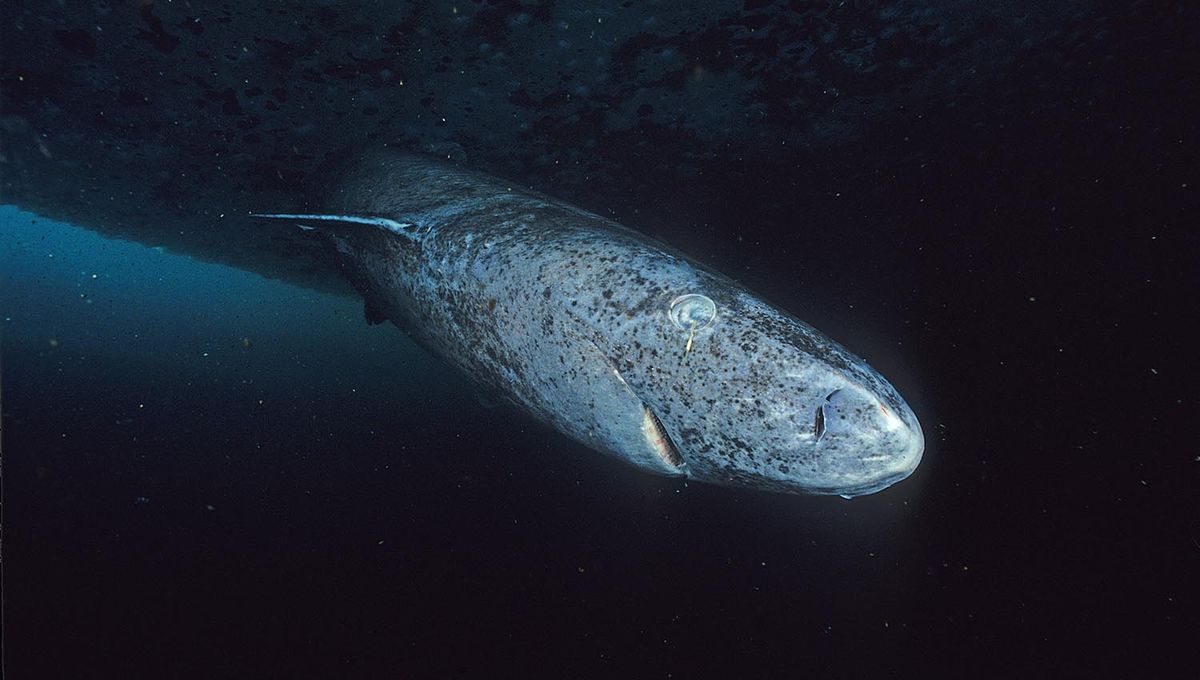
Surviving for around 400 years, the Greenland shark is the world’s longest-living vertebrate – but little is known about its impressive longevity. Now, an international team of scientists has mapped its genome for the first time, potentially spilling some of its anti-aging secrets.
The research (posted as a preprint and yet to be peer-reviewed) provides a complete view of the shark’s genetic makeup, which should help bring to light some of the genes and processes behind its extraordinary lifespan.
“The Greenland Shark’s genome is a quintessential step for understanding the molecular mechanisms of aging in this exceptionally long-lived species,” study co-author Steve Hoffmann, from the Fritz Lipmann Institute on Aging, said of the importance of the teams work in a statement.
Based on their findings so far, it seems the elusive shark’s DNA repair toolkit could at least in part be responsible for extending its life. “The analysis of the data suggests that improved DNA repair could play an important role in its extreme longevity,” Professor Arne Sahm, first author of the paper, explained.
The Greenland shark (Somniosus microcephalus) has a huge genome, with around 6.5 billion DNA base pairs, or building blocks – for reference, humans have around 3 billion base pairs, meanwhile, the largest genome of any organism belongs to a remarkably tiny fern and has a whopping 160 billion base pairs.
Still, the Greenland shark has the biggest genome of any other shark sequenced to date, the new research revealed, and, surprisingly, it’s packed full of repetitive and frequently self-replicating elements. These transposable elements move from one location on the genome to another and can disrupt normal gene function – as such, they are sometimes called “jumping” or “selfish” genes.
They make up over 70 percent of the Greenland Shark’s genome, which you might expect to be detrimental to their survival – but this doesn’t appear to have been the case. In fact, the researchers suggest that jumping genes may actually have contributed to the shark’s extreme lifespan by providing other genes the opportunity to commandeer the molecular machinery they use to multiply.
“We are tempted to speculate that the evolution of the Greenland Shark has found a way to counterbalance the negative effects of transposable elements on DNA stability – by hijacking the very machinery of transposable elements,” Sahm hypothesized. In doing so, the shark may have evolved a way of duplicating genes involved in DNA repair to help them better correct DNA damage, a hallmark of aging.
The team also found a specific alteration in the protein p53 – an important tumor suppressor that is mutated in around half of human cancers and is a major player in the longevity of many organisms.
“This work is a cornerstone for a better understanding of the basis of the Greenland Shark’s extreme physiology. Furthermore, it helps us assess their genomic diversity and thus the population size of this vulnerable species for the first time,” commented co-author John Fleng Steffensen from the University of Copenhagen.
It’s not just the Greenland shark that will benefit from this work – the findings could prove revolutionary for a whole host of organisms, including us.
“Exploring the genetic underpinnings of the huge lifespan diversity across the tree of life offers an entirely new perspective for investigating the mechanisms enabling exceptional longevity,” study co-author Alessandro Cellerino added.
The preprint is available on bioRxiv.
Source Link: How Does This Shark Live 400 Years? Longevity Secrets Spilled After Huge Genome Mapped